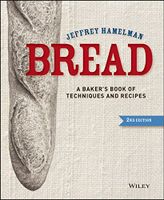Label
All
0
Clear all filters
Wheat
Appears in
Published 2004
Today, there are six classes of wheat cultivated, within which there are some thirty thousand varieties. (There is an immense amount of acreage planted to wheat in North America—almost 54 million acres in 2010—and it would be easy to conclude that wheat as we know it has always grown on the continent, but in fact wheat is not indigenous to North America, and was originally brought by farm immigrants from Europe.) The six classes of wheat are hard red winter, hard red spring, hard white winter, durum, soft white winter, and soft white spring. It is the first four that are of primary interest to the bread baker (the soft wheats have a lower proportion of protein and a higher proportion of starch than the hard wheats, and are more applicable to the production of pastries and other baked goods that don’t require a highly developed gluten structure). For our discussion, we will focus on the first four classes of wheat.
Become a Premium Member to access this page
Unlimited, ad-free access to hundreds of the world’s best cookbooks
Over 160,000 recipes with thousands more added every month
Recommended by leading chefs and food writers
Powerful search filters to match your tastes
Create collections and add reviews or private notes to any recipe
Swipe to browse each cookbook from cover-to-cover
Manage your subscription via the My Membership page
Best value
In this section
Advertisement
Advertisement
The licensor does not allow printing of this title


